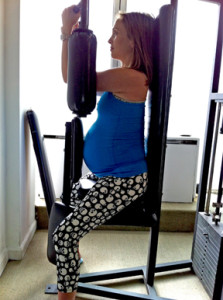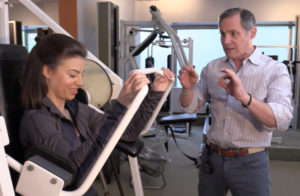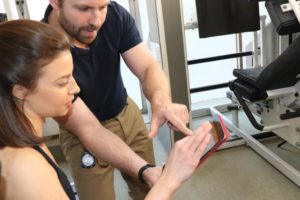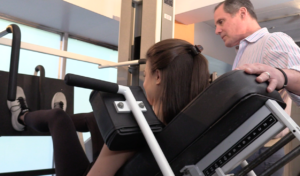Congratulations, you’re expecting! One of life’s most brilliant miracles is about to unfold and you have the best seat in the house.
Some of the physical changes to expect during pregnancy are:
- You start to grow (and glow).
- Now eating for two, you are increasingly ravenous and crave unusual foods (some not on your skinny plan).
- Also now breathing and pumping blood for two, you are increasingly exhausted, and
- The growing baby, combined with the extra pregnancy weight, increasingly challenges and strains your legs and lower back.
Expectant mothers are often advised to eat this, not that, and to supplement their diets with this, and avoid that. With countless myths and old wives tales running through every family and community circle, expectant mothers are bombarded with advice.
A ton of prenatal care literature is readily available and I’m certain that my wife read it all. Anyway, one consistency I found through all the literature, myths and wives tales is that adequate rest and good nutrition are the cornerstones to protecting both mother and child during the pregnancy, as well as during the big event! Yet, regarding appropriate prenatal exercise, no such consistency exists.
First and foremost, check with your OB GYN professional before you embark on any exercise program. Some circumstances warrant a range of caution, from limiting activities to total bed rest. High-risk conditions, such as placenta previa (complications involving the placenta) and pre-eclampsia (generally defined as pregnancy-induced high blood pressure) are conditions where exercise could prove detrimental to mother and fetus.
That said, during normal pregnancies, the conventional prescriptions for exercise are what you might expect, such as walking, or a pre-natal yoga class, and stretching. But, my opinion is this: exercise recommendations from trusted sources such as The Mayo Clinic and WebMD are as safe as they are useless with respect to preparing you for labor.
While I agree that SCUBA diving and ice hockey should be avoided, recommending walks and stretching hardly suffice as preparation for the birthing experience. Stretching isn’t even a warm up, as explained in my last post, My Twist On Stretching.
From my experience, (my wife and I are the happy parents of two, and for fifteen years I have successfully trained scores of pregnant clients), I believe that women should exercise throughout a normal pregnancy, and that by doing so, ensure a more comfortable and easier birthing experience. Those women will also enjoy the added bonus of significantly swifter recoveries.
Being pregnant and giving birth can be one of the most demanding physical challenges a woman will endure. So if you don’t exercise now, you might want to consider starting. If you already exercise, congratulations.
But now that you are pregnant, the time to think seriously about exercises that will concentrate on supporting your pregnancy and the birthing experience is now! You will need strength and endurance, and that means muscle and metabolic conditioning.
Think of the pregnancy months like training for an Olympic event.
Labor is called labor for a reason – it’s hard work, accompanied by tremendous strain for both mother and fetus. It’s the real deal.
Building muscle strength is key. Without strong muscles, a labor can be more painful and stressful to both mother and baby and could result in the need for a C-section to prevent fetal distress.
Conversely, training to build muscle strength will not only help you throughout the pregnancy, labor and birthing experience, it will also be a key factor in regaining your pre-pregnancy shape.
Proper breathing is critical. Breathing technique requires special training in preparation for labor. Proper breathing is critical as powerful contractions and the intensity in the pushing cycle can raise your blood pressure, which is dangerous to both mother and child.
Slow motion high intensity training coaches you on how to safely breathe through extreme muscular exertion. Breaking the Val Salva/Sync (the tendency to hold ones breath during exertion) is what we teach. Training to breathe properly through labor contractions, and the pushing cycles during birthing, can hardly be accomplished with the recommended Yoga and Lamaze classes, as neither simulates the contraction/breathing experience. This gives the mother a false sense of preparedness and leaves the mother and child at risk should the Val Salva/Sync effect take hold.
Think about the last time you lifted or pushed something really heavy. You might recall that you probably held your breath as you pushed or lifted – that is a natural instinct, but not the safest. Instead of putting added pressure on a filled balloon, the best method is to breathe (inhale and exhale) throughout the exertion.
Rest is a cornerstone in prenatal care. We recognize that serious workouts require serious rest and our program is structured to avoid over training and encourages adequate rest. Rest is a key component of the Power of 10 program.
When training at InForm Fitness while pregnant, we are providing you with a weekly rehearsal that will make your big day a sporting day and quickly get you back to your pre-baby weight and shape.
Here is how the Power of 10 Exercise Program can help you through your pregnancy and birthing experience:
- Overall improvement in strength and conditioning making the added weight and stresses to the body more comfortable during your pregnancy.
- Building up a tolerance for the exertion and discomfort you are going to experience.
- Teaches the breathing techniques necessary to break the Val Salva/Sync association and avoid the risks to you and your fetus
- Instills focus and concentration during intense muscular challenges.
- Training that concentrates on strengthening specific muscle groups you will rely on during birthing, including those addressed in Kegel exercises, and
- Underscores the importance of rest as a cornerstone of protecting mother and fetus while still getting all the exercise needed with a once a week, 20-minute workout.
So, once again, and from all of us here at InForm Fitness – CONGRATULATIONS! Now get your OB GYN’s approval and come in to begin your training.
![]()









